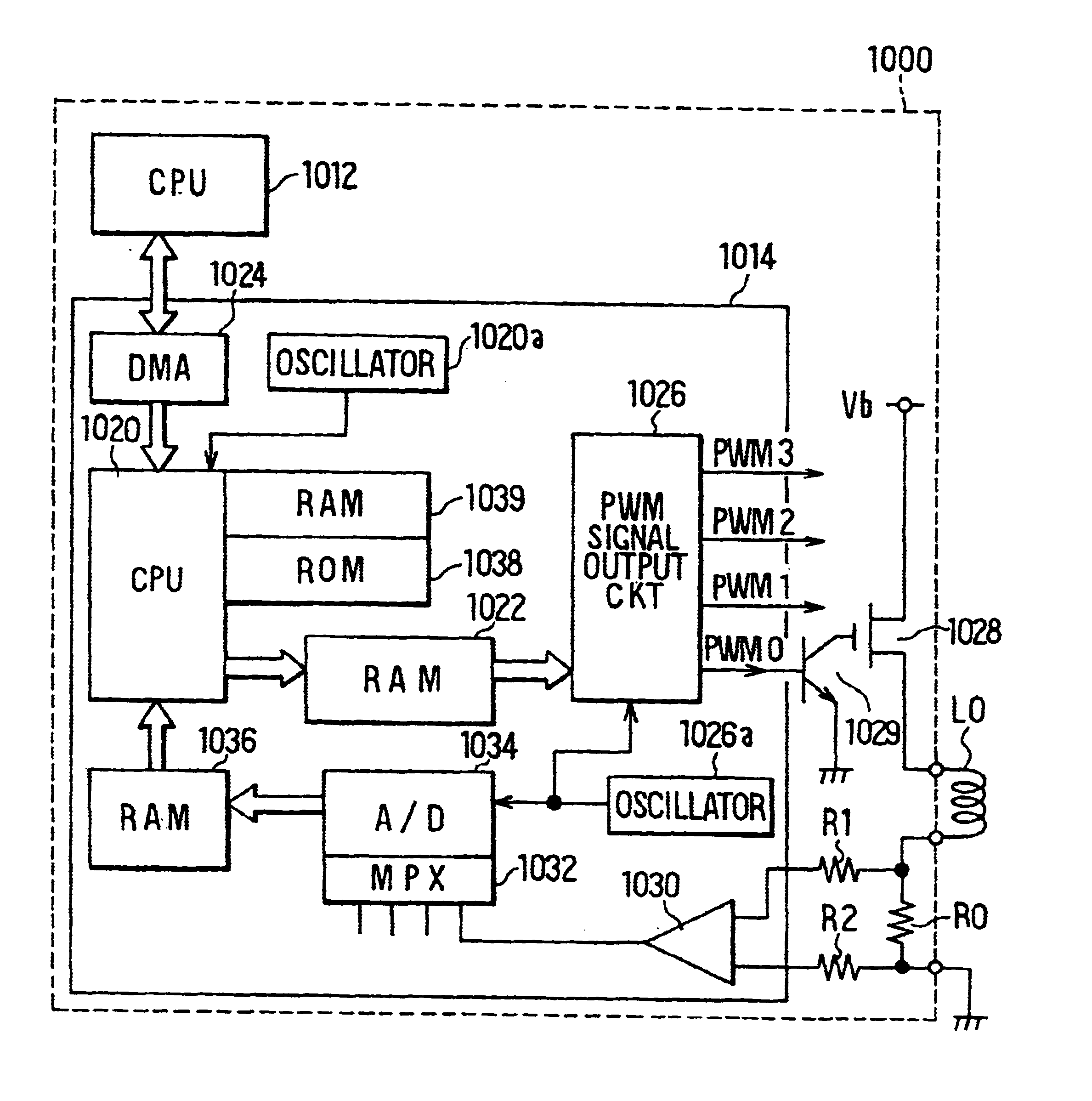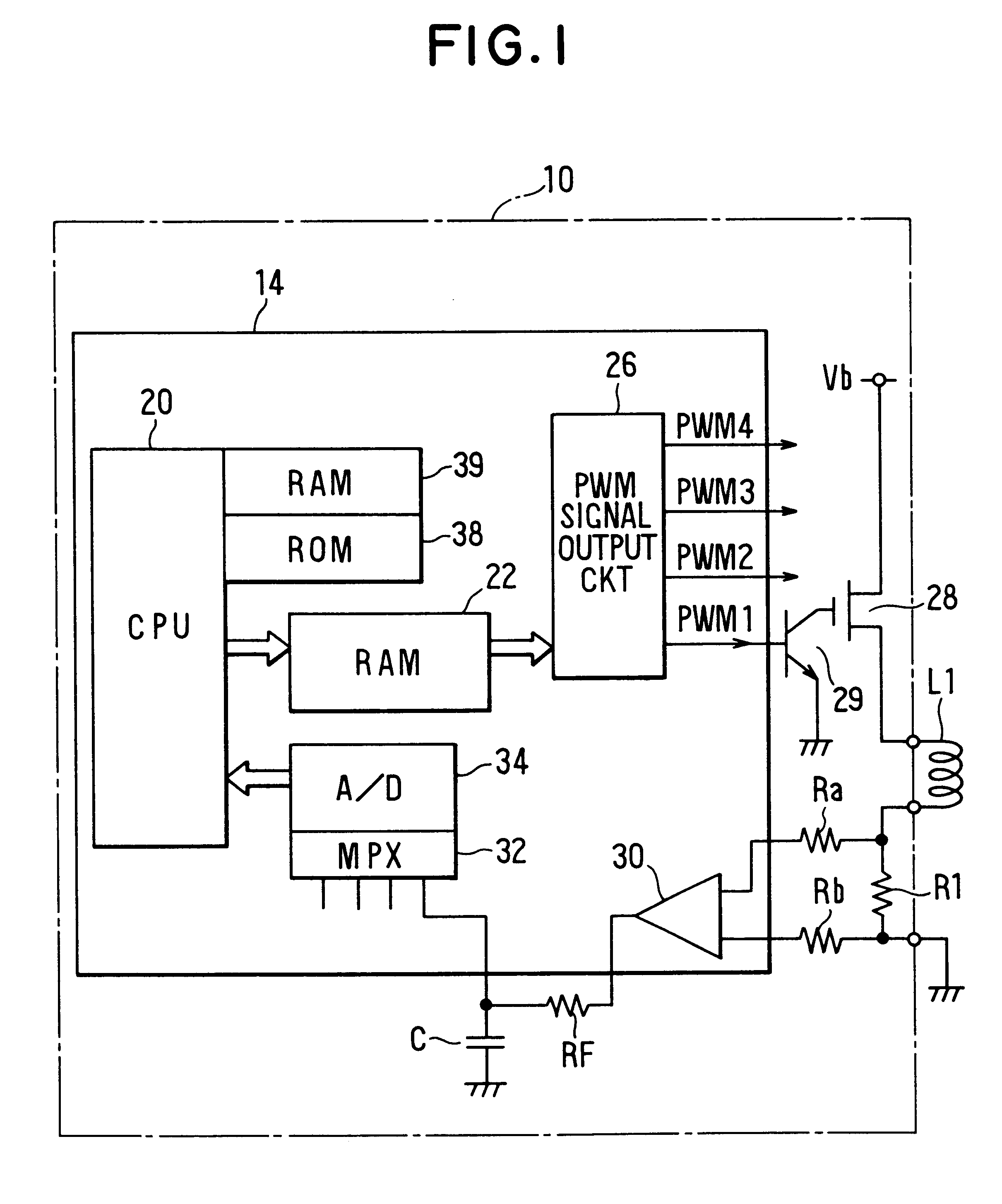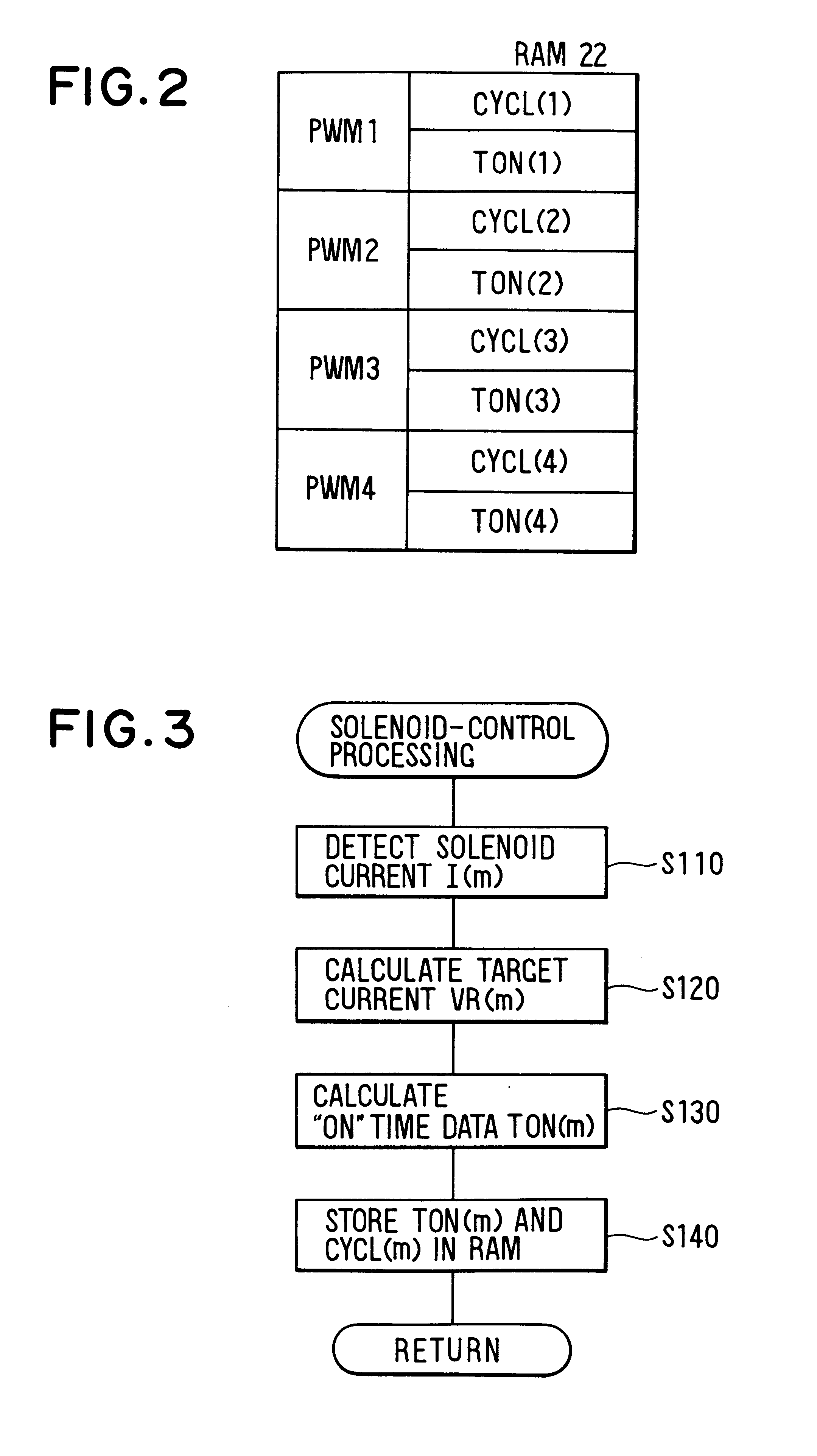Linear solenoid control apparatus and method having increased responsiveness features
a solenoid control and responsiveness technology, applied in the direction of electric controllers, electric programme control, program control, etc., can solve the problems of affecting the actual responsiveness of the current control to the inductive load, affecting the original reflection speed, so as to achieve the effect of high degree of responsiveness
- Summary
- Abstract
- Description
- Claims
- Application Information
AI Technical Summary
Benefits of technology
Problems solved by technology
Method used
Image
Examples
first embodiment
FIG. 1 is a block diagram depicting the structure of a conductivity controller (hereinafter termed simply "controller") 10 according to a first embodiment of the present invention for controlling linear solenoids in a vehicle-mounted electromagnetic-type solenoid or actuator.
The controller 10 according to the first embodiment is an apparatus for individually controlling conduction of a plurality (in the embodiment, four) of linear solenoids L1-L4 (FIG. 1 shows only L1) of a vehicle internal combustion engine. The controller 10 includes a microprocessor for linear-solenoid control 14 for calculating a target current for the solenoids L1-L4 based on signals from various vehicle-mounted sensors (not illustrated), together with performing current feedback control of the respective linear solenoids L1-L4 according to the target current.
The microprocessor 14 includes a CPU 20 for performing processing related to control of the several linear solenoids L1-L4, calculating a duty for duty-dr...
second embodiment
A controller 10 according to a second embodiment differs from the controller according to the first embodiment solely in that the pulse-width-modulated signal-output processing executed every 1 .mu.sec with respect to the linear solenoids L1-L4 is executed as shown in FIG. 6. The processing shown in FIG. 6 also is achieved by a pulse-width-modulated signal-output processing portion within the output circuit 26. Operation of the processing portion will be described.
As shown in FIG. 6, in the processing of the second embodiment, at S310 it is determined whether the value of the counter CNT is "0." When the value of the counter CNT is not "0," execution proceeds directly to S335, but when the value of the counter CNT is "0," the time at which clocking of the half-cycle time of the signal PWMm by the counter CNT has started is considered to be obtained, and execution proceeds to S315.
At S315, the cycle data CYCL(m) of the signal PWMm is acquired from the RAM 22, and a value equal to one...
third embodiment
A controller 10 according to a third embodiment of the present invention differs from the above-described controllers of the first and second embodiments solely in that the pulse-width-modulated signal-output processing executed every 1 .mu.sec with respect to the linear solenoids L1-L4 by the signal output circuit 26 is executed as shown in FIG. 9. The processing shown in FIG. 9 also actually is achieved by a processing portion, which is logic circuitry disposed in each of the several linear solenoids L1-L4 within the signal output circuit 26.
As shown in FIG. 9, in the signal-output processing of the third embodiment, at S410 it is determined whether the value of the counter CNT is "0." Accordingly, when the value of the counter CNT is not "0," execution proceeds directly to S425. When the value of the counter CNT is "0," the time at which clocking of the half-cycle time of the signal PWMm by the counter CNT has started is considered to be obtained, and execution proceeds to S415.
A...
PUM
 Login to View More
Login to View More Abstract
Description
Claims
Application Information
 Login to View More
Login to View More - R&D
- Intellectual Property
- Life Sciences
- Materials
- Tech Scout
- Unparalleled Data Quality
- Higher Quality Content
- 60% Fewer Hallucinations
Browse by: Latest US Patents, China's latest patents, Technical Efficacy Thesaurus, Application Domain, Technology Topic, Popular Technical Reports.
© 2025 PatSnap. All rights reserved.Legal|Privacy policy|Modern Slavery Act Transparency Statement|Sitemap|About US| Contact US: help@patsnap.com



